Test drive: 2021 Porsche Taycan Cross Turismo
The 2021 Porsche Taycan Cross Turismo is the brand's first all-electric station wagon, but Fox News Autos Editor Gary Gastelu says its far from a retro ride.
Who had "electric luxury off-road sports station wagon" on their 2021 bingo sheet?
Unless their name is Porsche, probably no one, but the brand's new Taycan Cross Turismo is a winner in many ways.

The Taycan Cross Turismo is a wagon version of the Taycan sedan. (Porsche)
It’s built on the same platform as the Taycan sedan, which was the first direct challenger to the Tesla Model S since it was introduced in 2012, and the pair have been strong sellers.
Porsche moved over 28,000 of the pair globally through the first nine months of this year, which was more than the Tesla Model S and Model X combined, not to mention the 911.
The electric wagon is far from a nostalgia play, though, so don’t be looking for any wood panel options. The U.S. long ago moved on from this body type, but it’s still popular in Europe and easy enough for Porsche to send some our way as it works on its upcoming electric SUVs.
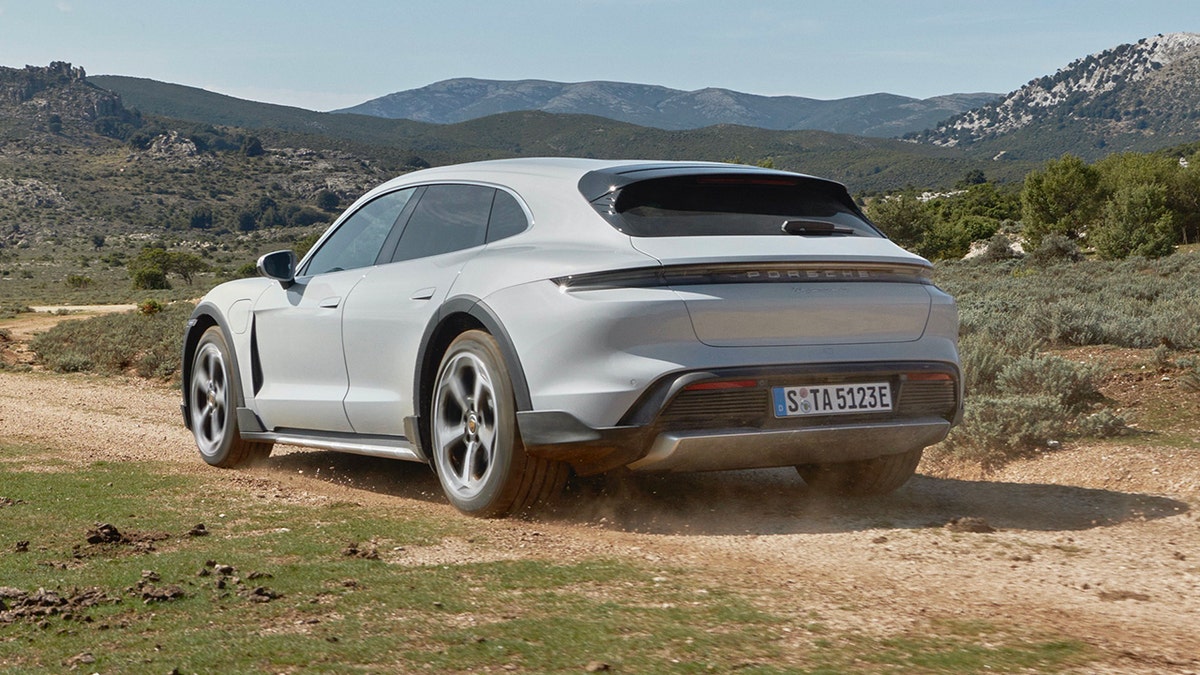
The Taycan Cross Turismo is equipped with an air suspension that can add ground clearance for gravel road driving. (Porsche)
Like most Porsche four-doors, it takes its inspiration from the 911, but adds just enough lighting and surfacing details to give it an ultramodern vibe and the company's iconic clean, unfussy interior style was has aged into this futuristic application.

The Taycan Cross Turismo has four digital displays, three of which are touchscreens. (Porsche)
A relatively small touchscreen is nicely integrated in the dashboard, rather than tacked-on like in so many vehicles today. A smaller one on the center console takes the place of physical buttons for the climate controls, audio system, etc. and incorporates a touchpad that can also be used to operate the main screen. Yet a third monitor sits above the glove compartment for the passenger to use.
The roof is entirely glass and the rear seat legroom midsize, at best. There aren’t any rear-facing way-back seats in the cargo area, which is a compact 14.5 cubic feet, but the space offers a tall roof and can be expanded into the passenger cabin by folding down the rear seatbacks.
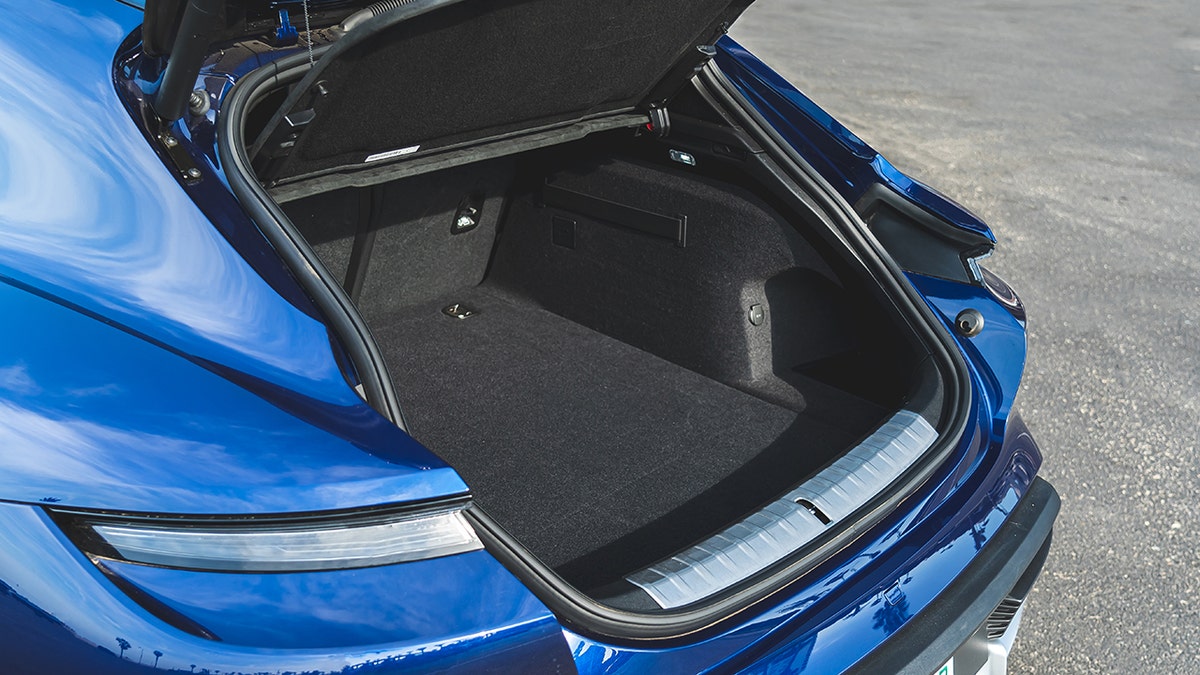
The long roofline and hatchback provide better cargo carrying capability than the sedan. (Porsche)
The Cross Turismo is available in four, four-wheel-drive flavors with prices, power and driving ranges as follows:
Cross Turismo 4: $95,050, 469 hp, 215 miles
Cross Turismo 4s: $111,650, 562 hp, 215 miles
Cross Turismo Turbo:$154,850, 670 hp, 204 miles
Cross Turismo Turbo S: $188,950, 750 hp, 202 miles
No, electric cars don’t use turbos, but Porsche isn’t ready to let go of its past entirely, so deal.
An air suspension that can lift and lower the vehicle is standard and there’s a Gravel traction control setting and an optional off-road package that adds a bit of protective body cladding for trips up dirt roads to the lake house. You’ll still want to watch out for the rocks and ruts because it’s a relatively low-rider compared to a more traditional utility vehicle.
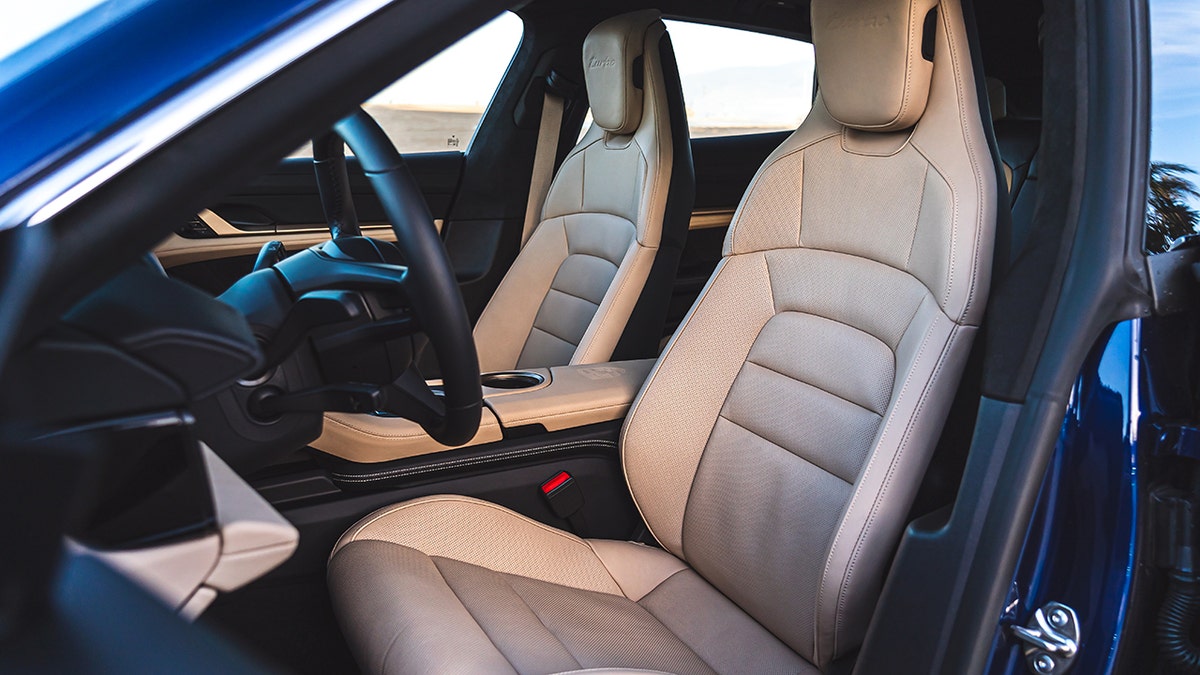
(Porsche)
The Taycan’s electric powertrain is unique in that it has a small motor driving the front wheels and a lager one at the rear that’s connected to a two-speed transmission, which hasn’t been seen in an electric car since the earliest editions of the original Tesla roadster. Porsche says the complexity is worth it to deliver the mix of performance and efficiency it’s going for.
All of the trims have the same 93.4 kilowatt-hour battery pack, which is a little smaller than the one in the 670 hp version of the Model S that’s rated at a much more impressive 405 miles. Independent tests often find that the Porsches overachieve in the real world, but that’s a pretty wide spread. Porsche chalks some of the difference up to the various testing protocols allowed by the EPA and chose the most pessimistic figure to publish.
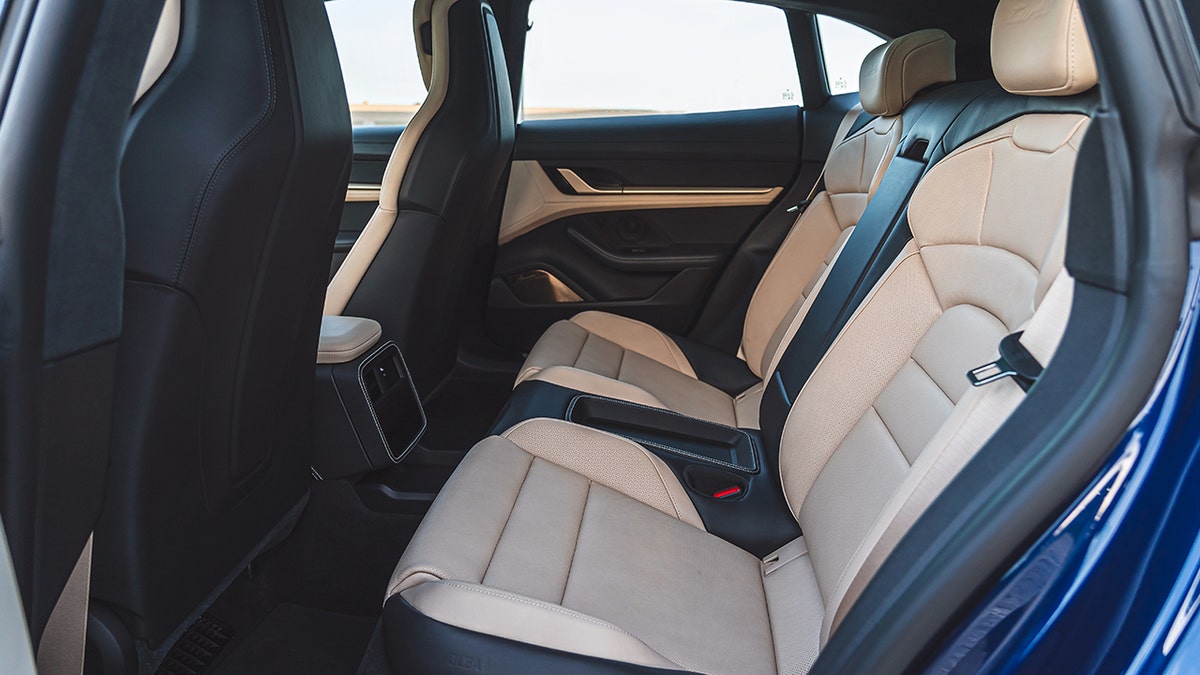
The Taycan Cross Turismo provides midsize accomodations. (Porsche)
My test car was a Cross Turismo 4s, which is likely to be the best seller. Cruising on highway, with the Porsche InnoDrive adaptive cruise control and lane-centering system engaged, it showed a power usage of 35 kWh per 100 miles, which would translate to about 250 miles per charge. A Range setting that uses only the front motor and limits the top speed to 60 mph could potentially improve that on a long trip.
I didn’t find out, because I didn’t try. The public fast-charging infrastructure in the New York metropolitan area still can’t be trusted to provide maximum performance. A fact that I reconfirmed by plugging into a 150 kW Electrify America fast charger that only provided 45 kW of power, which meant a much longer wait than expected.
It’s unfortunate. The Taycan Cross Turismo’s 800-volt architecture was engineered to handle the most powerful charging available today, up to 270 kW using one of Porsche’s Turbo Chargers (ha, ha, ha, ugh). They can reportedly replenish the battery from 5-80% in 22.5 minutes, but are in the process of being rolled out to select Porsche showroom locations, so good luck finding one anytime soon.
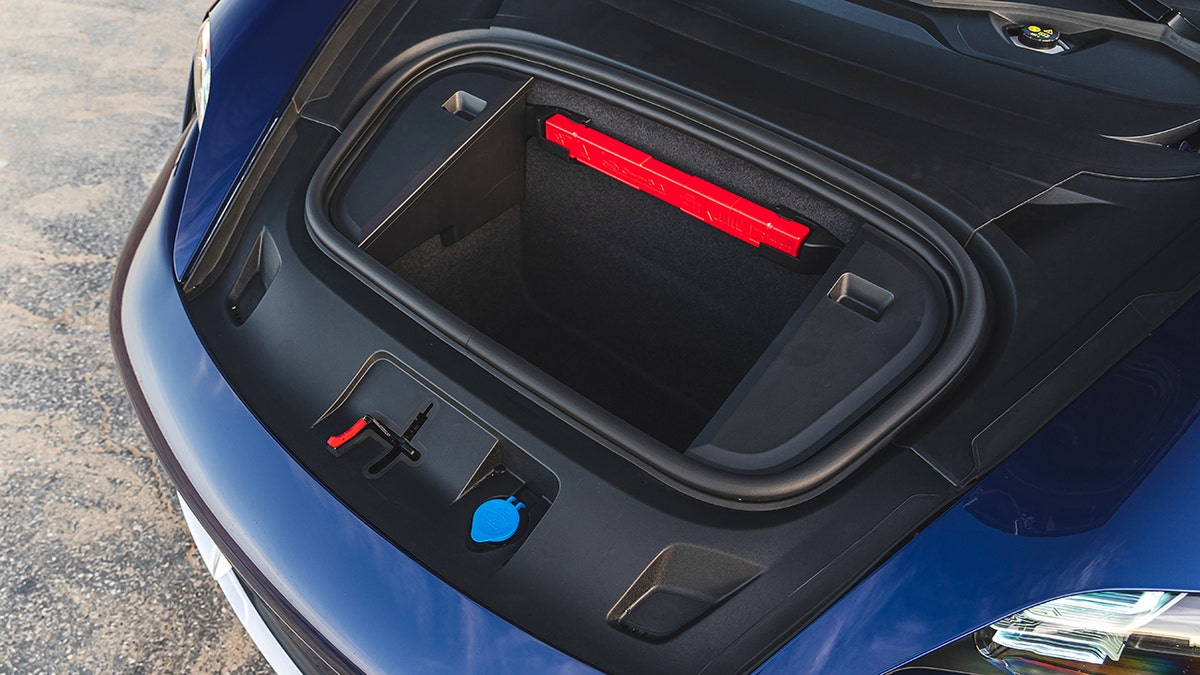
A front trunk offers additional storage capability. (Porsche)
With an average household income of over $900,000, I’m guessing most Taycan owners have a house to plug theirs into, so they can get a quick start in the morning with a fresh battery to make this a non-issue most days. And the Taycan Cross Turismo is quick.
The 4s snaps your neck when you floor the accelerator and reaches 60 mph in 3.9 seconds, while the Turbo S can do it in 2.7 seconds in near silence. That is unless you engage the faux digital engine note that fills the cabin with a grey noise that creates a "Tron" effect and gets as old as that movie very quickly.
Without it, you may as well be riding in a velvet-lined bank vault as the loudest thing you’ll hear is the air conditioning or the crystal clear Bose audio system that takes full advantage of the tranquil setting. There’s not a squeak or creak. The Taycan is tight.
The ride couldn’t be any supplier, but the car remains composed in the curves as it soaks up road imperfections big and small. I honestly can’t recall the last vehicle I tested that was dialed-in so perfectly.
Even when you switch to Sport or Sport Plus mode it never gets harsh, but the handling is as sharp as you’d expect of a Porsche. The steering feels a little artificial and the brake pedal is spongy, but the Taycan Cross Turismo takes twisty back roads like they’re slot car tracks. At just around 5,000 pounds, it’s not much heavier than the bulkiest Porsche Panamera, but feels the same, if not lighter.
CLICK HERE TO GET THE FOX NEWS APP
It’s nearly impressive off pavement. My test car was equipped with low-profile high performance street tires on 20-inch rims, but was still a blast and not at all unpleasant to drive on an unmaintained road I usually use for evaluating SUVs and trucks. I could see it being an absolute riot with a set of all-terrain rubber wrapped around rally wheels.
But while the driving experience is impeccable, the tech needs some work. Porsche’s user interface is busy, the trackpad not worth the trouble, there’s only wired Apple CarPlay for phone integration and you need to use the screens to do everything, including adjusting the air vents, which is particularly frustrating since they’re designed with what look like handles on them.
Aside from a self-parking feature and Porsche’s InnoDrive adaptive cruise control and lane-keeping system, there’s also no promise of autonomous driving like you get with a Tesla.
I suspect Porsche customers wouldn’t have it any other way.
----------
2021 Porsche Taycan 4S Cross Turismo
Base price: $111.650
As tested: $136,370
Type: 4-door, 4-passenger all-wheel-drive station wagon
Drivetrain: 2-motor electric
Power: 562 hp, 479 lb-ft
Transmission: automatic
Range: 215 miles per charge
MPGe: 75 combined
